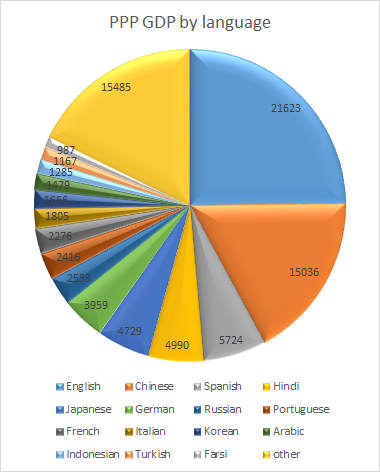This image represents a breakdown of world GDP by language, using purchasing power parity (PPP) rather than nominal (exchange-rate) GDP. PPP GDP better reflects the cost of living in each country, and allows more significance for countries with larger populations but less-developed standards of living. It may also be a guide to the dominant languages of the future.
English represents 24.8% of the total; Chinese 17.2%; Spanish 6.6%; Hindi 5.7%; Japanese 5.4%; German 4.5%. This sum is a total taken only across the 30 countries with the largest GDP (PPP). With more countries included, it is likely that the total would rise for English, Spanish, French, and Arabic, as these four are the official languages in more countries than any other language.
English represents 24.8% of the total; Chinese 17.2%; Spanish 6.6%; Hindi 5.7%; Japanese 5.4%; German 4.5%. This sum is a total taken only across the 30 countries with the largest GDP (PPP). With more countries included, it is likely that the total would rise for English, Spanish, French, and Arabic, as these four are the official languages in more countries than any other language.

 RSS Feed
RSS Feed